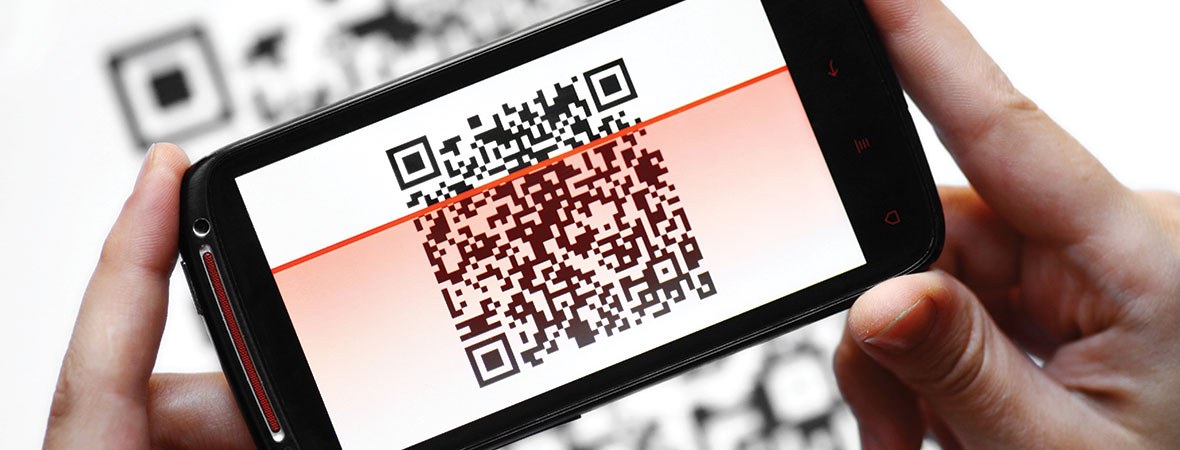
The QR code journey
The history of the QR code traces all the way back to the barcode.
It all started out with a graduate student named Bernard Silver at the Drexel Institute of Technology in Philadelphia. Silver had overheard the president of a local food chain requesting research be done to develop a system that automatically read product information during checkout. Soon after hearing this, Silver told his friend Norman Joseph Woodland about the idea, and Woodland was instantly drawn in, fascinated.
The symbology of the barcode that was eventually patented was a pattern made up of four white lines on a dark background. ‘The first line was a datum line and the positions of the remaining three lines were fixed with respect to the first line’. As the idea developed, they realised that the more lines they could fit into the pattern, the more information could be coded.
The QR (quick response) code can be accurately looked at as the barcode v 2.0. The barcode was designed as a one-dimensional pattern, extending on only a vertical or horizontal axis. Alternatively, the QR code, conscious of the barcode’s one-dimensional limitations, was made to utilise a 2-dimensional field. The QR code extends both horizontally and vertically, using four standardised encoding modes – numeric, alphanumeric, byte/binary and Kanji. By doing so, the QR code increased the readability and information-storage capacity its younger sibling was capable of.
The QR Code Grows Up
One of the first ways in which the QR code was implemented was in the auto industry, used initially for tracking parts in vehicle manufacturing. Since then it has been stretched and pinched and pulled and chopped up, used for all different sorts of things.
Taco Bell was one of the first organisations to use the QR code effectively, printing QR codes onto their 12-pack taco boxes, which, when scanned, would then show exclusive video footage of Mark May previewing upcoming games. The campaign saw over 225,000 QR scans in the relatively short time frame and was viewed as a great success. Some other big names to embrace the QR Code in packaging based collateral HP, Heinz, Nestle and McDonalds, who all saw significant user interaction and engagement as a result of QR code innovation.
But of course, QR codes aren’t only effective on packaging. L’Oreal used QR codes in NYC taxis (which, for those who’ve never been to NYC, have TVs for backseat passengers). Angry Birds and Instagram used a QR code to draw people to the download section of their respective apps. Amnesty International were also able to effectively use the QR code by placing posters with the provocative banner – FREE PUSSY – under which was a QR code with information about freeing the prosecuted Russian punk band and protest group, Pussy Riot. Talk about getting creative.
The Hurdles Faced by the QR Code
Despite the many successes QR codes have had in the world of marketing, not everyone is convinced that the QR code has a future. Some of the obstacles they face are things like lack of a native smartphone scanner (the need for smartphone scanners), sites that aren’t mobile-friendly, and one of the biggest pitfalls of all – consumer indifference.
Despite all of these very real hurdles that the QR must jump over if it is to keep on gallantly galloping into the distance, we think that QR codes do indeed have a future. And one version of its future might lie in holograms. The concept focuses on using encrypted 3D information embedded securely into the QR code to display "3D" or holographic type content. But I'll leave that up to the guys at Cnet to explain it further.
In any case, however, QR codes are – and yes, as they remain in their current state – far from dead. Like any other marketing avenue, what will determine whether a QR code campaign will succeed or fail is how creatively it is put into place. If a QR code is implemented in a fun and inventive way, if it offers consumers something with a real and tangible benefit, and if it is done at the right time – it’ll offer plenty.
